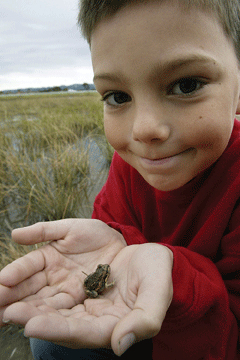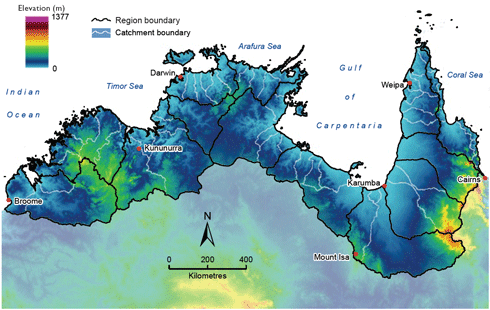
|
Published:
Grassroots as important as ever says Landcare pioneer
Landcare’s 20th birthday celebrations from 7 to 13 September this year provided an opportunity for Australians to reflect on the movement’s significant legacy.

|
|
One of the legacies of Landcare is the way it brings young and old together to work on local conservation initiatives. Credit: Landcare
|
It was Landcare that introduced thousands of farmers and others with a connection to the land to ideas like whole farm planning, fencing to land type, collective neighbourhood approaches to rabbit and weed control, and planting indigenous trees for salinity control and gully stabilisation.
Today, around 100 000 volunteers – members of more than 6000 Landcare and Coastcare groups across the country – continue to plant trees and shrubs on degraded land, fence off streams and gullies to protect regrowth, establish wildlife corridors, set up sustainable farming research trials and restore wetlands.
The Landcare national program began in 1989 when – with impetus from the National Farmers’ Federation’s Rick Farley, the Australian Conservation Foundation’s Philip Toyne and others – Prime Minister Bob Hawke announced government support for a national program, declaring the 1990s as the Decade of Landcare and pledging an unprecedented level of national funding for landcare and nature conservation.
‘They were heady days, infused with optimism underpinned by the solid foundations of community enthusiasm, bipartisan support, the NFF–ACF partnership and a decade-long funding commitment,’ recalls Australia’s first National Landcare Facilitator, Andrew Campbell, now a consultant.
While there is no doubt about the subsequent success of Landcare, Campbell is concerned that governments may undervalue the contribution of Landcare in future land conservation policy.
‘For me it is common sense that lasting improvements are more likely to arise where the people whose everyday decisions and actions most influence the problem, are involved in developing and implementing solutions,’ he says.
‘In many districts, Landcare has changed community norms about what it means to be a “good farmer”.
‘Landcare has also played a crucial social role in developing joint approaches across farm boundaries and in building partnerships between landholders and government, between full-time and part-time farmers, between country and city dwellers, and between young people and older people.
‘There is much to be gained from taking the best elements of the Landcare approaches of the Hawke–Keating era and rejuvenating them for the next decade and beyond, as part of a more comprehensive re-think of agriculture, environment and natural resource management in this country, in rural, urban, peri-urban and coastal areas.
‘A bipartisan commitment to rejuvenate the Landcare movement, building on the local and regional community base for environmental action over the next decade, would be an apt way to mark the 20-year anniversary of the launch of the Decade of Landcare.’



